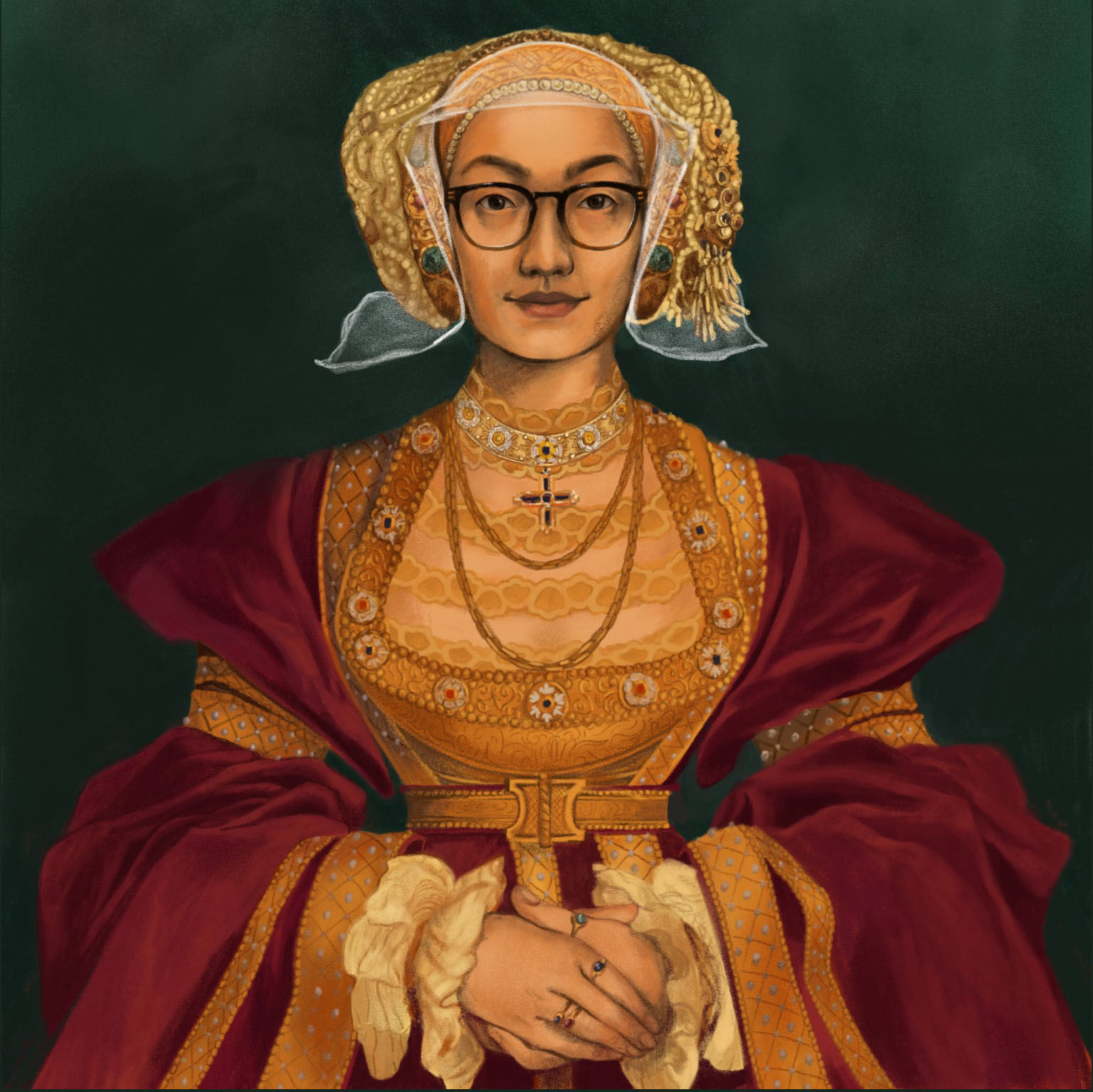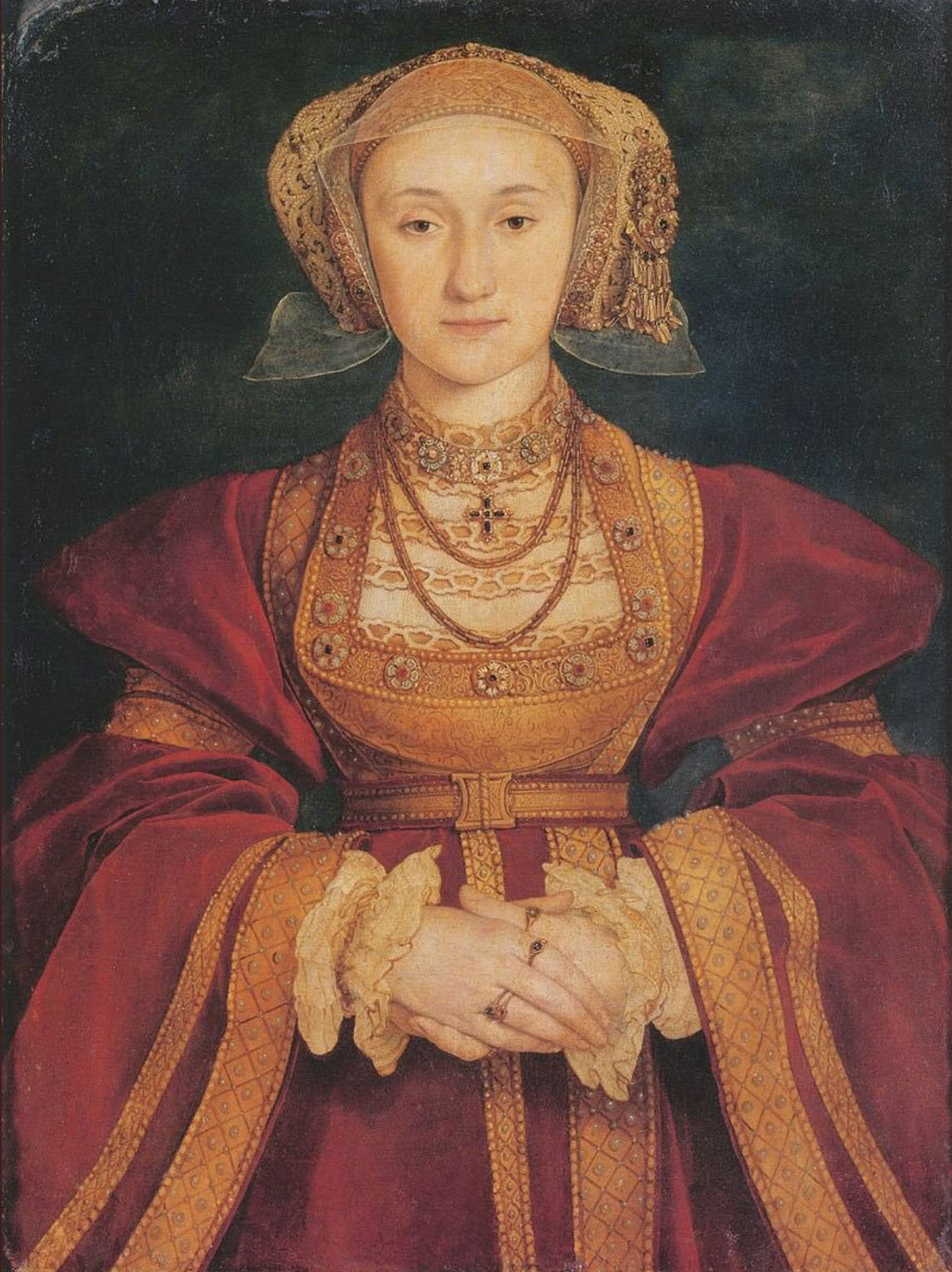58/100
Portrait of Anne of Cleves
-
Artist
Hans Holbein the Younger
-
Year
1539
-
Culture
German
-
Date of Copy
This was painted for the notorious six-wife-haver King Henry VIII of England. He'd get portraits painted of potential brides, and this was for number 4 of 6, Anne of Cleves. He chose Anne on the strength of this portrait but was unpleasantly surprised when he met the lady IRL. Their marriage was annuled 6 months later. (He probably would have sympathized with the catfishing risks of online dating.)
Anne was apparently also kind of boring. She grew up extremely sheltered and did not know how to read English. After the vivacious and wily Anne Boleyn, I can see how Henry VIII would be disappointed. I'm reading The King's Painter: The Life of Hans Holbein by Franny Moyle now, and it makes the interesting point that Holbein depicts Anne from the front, rather than the more traditional three-quarter view for the time. She suggests that it could be for two reasons: (1) To suggest Anne's lack of depth, and/or (2) To echo the way that the Virgin Mary was commonly depicted at the time, suggesting that Anne would be a wonderful mother to great heirs.
Obviously none of that worked out. Henry was so mad about this whole thing that he ended up executing his right-hand man Thomas Cromwell over it (which, if you're interested, is dramatized in Hilary Mantel's Wolf Hall series). The whole thing ended up terrible for everyone involved...except for Anne, who after the divorce was given some nice estates to live in peacefully for the rest of her life, plus some royal perks. She outlived all the rest of Henry VIII's wives.
The thing that really got me when I was drawing this one was all the jewels. Anne's dress is trimmed with gold and pearls, her headpiece is totally gem-encrusted, and she's got all that jewelry around her neck. By the end I was totally sick of it. Later I learned that Hans Holbein the Younger would bring his sitters' clothes back to the studio with him to keep painting separately, which explains a lot about why the clothing was depicted in so much detail.
Hans Holbein the Younger was German, but moved to England and became a royal painter there. His portraits are amazing, full of life and incredibly precise. He's someone I hadn't really known about before I started this project but now absolutely love. He seems to have that Northern Renaissance attention to surface detail, but unlike many of his predecessors also had a very strong command of accurate human anatomy. Some people think he used a camera obscura.
I remember feeling excited that this was the closest to a likeness of myself I'd gotten so far. I had some minor epiphanies about the angle of my eyebrows and the bags under my eyes--turns out your eyes aren't like stickers painted flatly onto your face, they're three-dimensional spheres stuck into the larger spheroid of your skull, and they affect the skin and flesh around the part of the eye that you can see. This may sound a bit morbid but trust me, it was an exciting revelation.
Reference image is from Wikipedia. The original is in the Louvre in Paris.

